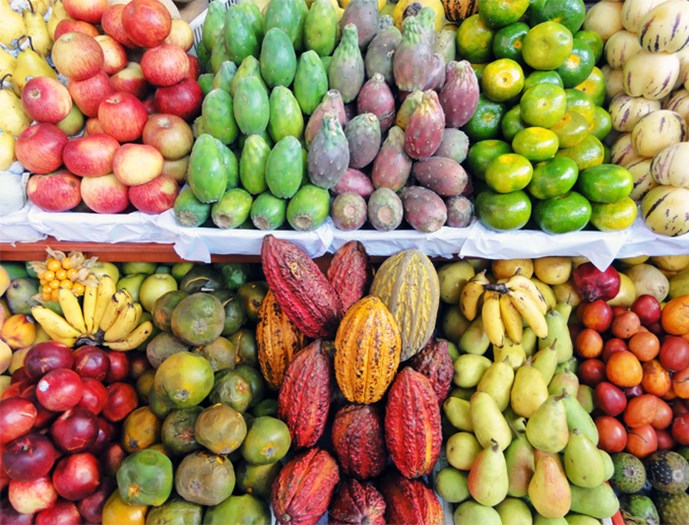CUSCO, PERU - While peering through the aircraft’s cabin window as we descend into this high altitude city, my anticipation soars. Cusco is the starting point for my journey through the Sacred Valley of Peru, which promises to lead me to colourful markets, ancient ruins, the descendants of a mystical time and, eventually, Machu Picchu.
I go straight to the heart of this cobbled colonial town and arrive at Cusco’s plush Inkaterra La Casona, a colonial manor house once occupied by Spanish conquistadors. Here I sip coca tea amidst the sweet and purifying scent of palo santo wood and acclimatize to the elevation.
Then I hike the steep, narrow streets that climb up to the summit of Sacsayhuaman, which translates to Sexy Woman Mountain. How can I resist climbing a mountain with such a “sexy” name? The steep incline quickly zaps my gusto and elderly Quechua women leading their llamas just giggle at the stranger bent over gasping for breath.
After enjoying the breathtaking views one is afforded from Sexy Woman Mountain, I head back to Cusco and meander through the charming labyrinthine alleys, past galleries and museums, and follow my nose to the Choco Museo, where I learn the step-by-step process of making my own organic Peruvian chocolate — from bean to bar.
The valley is like a cauldron of potent herbs and grains from cat’s claw to kiwicha, and the market in Cusco is a nutraceutical paradise of rare ingredients.
Later on my tour, in Pisac, the market there displays cosmically coloured woven tapestries of Inca symbols and fruits that look like they belong in a science fiction movie.


Left: Peruvian culture is interesting and unique. Right: Peruvians are not camera shy.
The mother of all Peruvian grains, quinoa, blankets the fields of Urubamba and that’s where I indulge in a quinoa spa treatment at the Tambo del Inka Resort & Spa. The treatment begins with an elaborate course of hydro baths leading to a deep coca massage and quinoa facial to rehydrate and regenerate.
Next morning, I indulge in buttermilk and black quinoa pancakes with a red wine reduction, local honey and warm house-made kiwicha bread before heading out.
Midway through the valley, I visit the ancient polygonal salt ponds of Maras. Connected by irrigation channels, they slope down the mountain and, as the waters evaporate, the various coloured salts are harvested and sold.
At nearby Moray, concentric terraces, like an enormous bull’s eye, are impacted into the grassy landscape. Is it an ancient agricultural experiment or a sophisticated irrigation system? No one knows for certain.
It is pouring rain as I board a glass-dome train bound for Aguas Calientes. This train is the only public mode of transport to the Machu Picchu town. The rail line runs parallel to the river in winding loops that follow the riverbed. The ride itself provides awesome views of this remote terrain.
At the Inkaterra Machu Picchu I follow a stone path through the woods to a tea plantation where I’m instructed on how to pick fresh leaves and press my own green tea. Nourished by fresh organic yogurt, honey, kiwicha and bee pollen, I feel ready for the hike to Machu Picchu.

Above: Cocoa used to make the delicious coffee.
An early morning bus winds around hairpin turns and up through the clouds to the heritage site, undiscovered by conquistadors and untouched by time. As the sun rises over the silent peaks that crown the valley, I’m transfixed by one of the most breathtaking vistas in the world.
One can only marvel at the architectural feat that is Machu Picchu. This iconic Inca estate, built on top of a mountain ridge, leaves me wonderstruck as I sit in silence and try to imagine how and why it was built. At one end of the steep site is the foot of the storied Inca trail, and at the other, the grueling hike up to an even higher summit, Huayna Picchu. A nearby sign reminds me the climb is: “Only for the fit and healthy.”
So I pace myself as I climb the uneven — and in some cases non-existent — steps that wrap around the peak. Pulling myself up with a rope, crawling through a cave, and then clambering over boulders, I finally reach the apex of Huayna Picchu, and I’m simply awestruck.
Standing on a perch just below the cloud line, its like I’ve reached the ceiling of the world. From my satchel I pull out a small bottle of the renowned Peruvian brandy, Pisco, and toast to the heavens above: Salud!